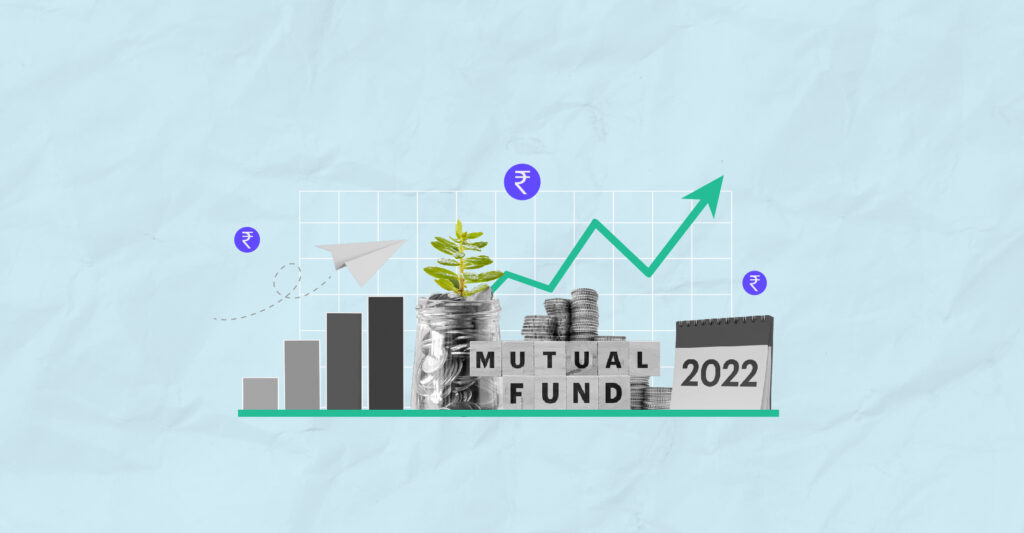Last Updated on Apr 19, 2024 by Anjali Chourasiya
Everyone is aware of the term mutual funds. But digging deeper, you’ll find various mutual fund schemes and types, which can be perplexing. Though mutual funds are not complex, investors need to understand every detail of mutual funds to make better investment decisions. In this article, let’s discuss mutual funds, working, types, finding the best mutual fund, how to invest in a mutual fund, how to analyse mutual funds, and more.
Table of Contents
What are mutual funds?
It is an investment avenue where money is pooled by a bunch of investors to purchase different financial securities. These securities include stocks, bonds, money market instruments and gold. Therefore, when you buy a mutual fund unit, you own a small share of all the investments in that particular fund.
How do mutual funds work?
A mutual fund is managed and operated by an Asset Management Company (AMC). They pool investments from different individuals and institutional investors with common investment objectives.
A fund manager (portfolio manager) from the AMC invests the pooled amount in securities and manages it professionally to generate maximum returns. The fund manager is a professional with a deep understanding of the markets and is well-experienced in managing investments.
A mutual fund investor can make money through regular interest or dividends and capital appreciation. They can further reinvest the capital gains through a growth option or just earn a steady income through dividends.
Types of mutual funds
There are various types of mutual funds classified based on different characteristics, as listed below.
Based on asset class
- Equity funds: These funds primarily invest in equity stocks of the companies. Equity funds have the potential to provide high returns over time. As they are linked to the market, the risk associated with these is high compared to other funds.
- Debt funds: These funds invest in debt instruments like government bonds, company debentures and fixed-income plans. Debt funds come with a fixed interest rate and maturity date. Hence they are considered ideal for passive investors looking for fixed returns.
- Money market funds: These funds invest in liquid instruments like bonds, T-Bills, certificates of deposits, etc. The risk associated with money market funds is credit risks, interest risk and reinvestment risk.
- Hybrid funds: These invest in a mix of debt and equity. Returns and risks are balanced in this option. For example, if 60% of the investment is put into equity, the rest is put into bonds or other options. Similarly, many combinations are tried. Hence it is also called balanced funds.
Based on structure
- Open-ended funds: As the name suggests, the units in these funds can be purchased or redeemed at any time per the prevailing Net Asset Value (NAV). There are no constraints on the number of units to buy as well.
- Close-ended funds: These funds can be purchased only as per the predefined unit capital. And can be redeemed only at a specific maturity date. Unlike open-ended mutual funds, the stocks or units, once bought, cannot be sold back to the mutual fund. Instead, the stocks should be sold through the stock market at the prevailing share price.
- Interval funds: These funds come with the features of both open-ended and close-ended funds. The fund house decided on specific times for the purchase or redemption of the fund. The funds remain closed for the rest of the time. An investor looking for a lump sum investment for a short-term (3 to 12 months) financial goal can choose interval funds.
Based on the risk class
- Low risk: These are for risk-averse investors. Low-risk investments like debt markets are considered, and these are also for the long term. The returns on these also can be low.
- Medium risk: These are for investors willing to take a bit of risk with their money. Medium risk funds involve some risk and provide a bit high returns.
- High risk: These are for investors willing to take a high risk with their money. Given the risk profile, high-risk funds offer higher returns.
Based on the investment objective
- Growth funds: In these funds, the investment is made in equity stocks to provide capital appreciation.
- Income funds: In this scheme, money is invested in fixed-income instruments like debentures, bonds, etc.
- Liquid funds: In this scheme, investments are made in short-term or very short-term products like Certificates of Deposits, T-Bills, etc. They have a low-risk profile and offer moderate returns.
- Tax-saving funds (ELSS): The investment is made under equity shares in these funds. As the name suggests, the investment made in the tax-saving funds is eligible for deductions under Income Tax (IT) Act. Though they are considered high-risk funds, they offer good returns if the fund performs well.
- Capital protection funds: The investment is split between equity and fixed-income instruments in this scheme. This is to offer protection to the investment made.
- Fixed maturity funds: The assets are invested in money market and debt market instruments.
- Pension funds: In this scheme, the investment is made in the equity and debt market to balance the risk and returns. The pension fund aims to provide regular returns at the time of retirement. The returns can be either taken as a pension, lump sum, or both.
Based on speciality
- Sector funds: Under this scheme, the investment is made in a particular market sector. Though they offer high returns, the risk is also high depending on the nature of the stock.
- Index funds: Under this scheme, the investment is made in instruments with a particular index on the exchange. Index funds are ideal for passive investors. A fund manager does not manage these.
- Fund of funds: The investment is made in other mutual funds in this scheme. These are also called multi-manager funds. It offers diversification while the cost is also kept down.
- Emerging market funds: As the name suggests, these funds invest in emerging markets that show good opportunities for the future. They involve high risk due to prevailing economic conditions.
- International funds: The investment is made in companies located in other parts of the world. These are also known as foreign funds. In international funds, the investment can’t invest in their own country.
- Global funds: The investment is made in a company anywhere in the world. The investment can be made in the investor’s own country in the global funds.
- Real estate funds: As the name suggests, these funds invest in companies in the real estate sector like property management companies, builders, realtors, etc. It allows investment at any stage of property (under construction or fully constructed).
- Commodity-focused stock funds: In this fund, the investment is made in the companies that are focused on the commodities market.
- Market-neutral funds: Under this scheme, the funds are not directly invested in the market. The investment is made in ETFs, treasury bills, and securities.
- Inverse/leveraged funds: In this, you will earn when the market falls, and when the market is performing well, these funds drop. It involves high risk and can provide high returns as well.
- Asset allocation funds: There are two types, target allocation funds and target date funds. The fund managers adjust the allocated assets to achieve results. The investment amount is split into equity and bonds.
- Gilt funds: The investment is made in government securities for a long period. The risk is also low because the investment is made in government securities.
- Exchange-traded funds: This is a mix of both open-ended and close-ended funds. The investment is made in the stock market. Exchange-traded funds are not actively managed.
How to find the best mutual fund?
Once you know the different types of mutual funds, you must understand how to pick the best mutual fund for you. Here are a few things you should check to find the right fund that suits you.
Investment objective
The first step to understanding which mutual fund suits you is from your investment objective, i.e. why you are investing, whether it is for growth or regular income.
Investment time
Once the investment objective is set, the next important step is to find the time period. There are various funds that are ideal for long-term, mid-term, short-term, etc. According to the investment horizon, you can pick the right investment.
Lump sum or SIP
You also need to figure out how you want to invest your money, whether in a lump sum or through a Systematic Investment Plan (SIP), which allows you to invest a particular amount every month.
Risk
Knowing how much risk you are willing to take with your hard-earned money is essential. Equity funds are preferred by investors who are open to taking moderate to high risk, while debt funds are preferred by investors who are open to low to moderate risk.
Taxation
It is one important criterion to understand taxation before you start investing. The returns from the investment are taxed based on the gains and the investment time period.
- In equity funds, long-term capital gains (more than 12 months) are taxed at 10% if the gains are more than Rs. 1 lakh. Short-term capital gains (less than 12 months) are taxed at 15%.
- While on non-equity funds, long-term capital gains (more than 36 months) are taxed at 20% after the indexation benefit is allowed. And short-term capital gains (less than 36 months) are taxed as per your income tax slab.
Expense ratio
Once you have sorted your investment objective, time, risk and taxation, you need to check the expense ratio of the fund. The expense ratio is a fee the fund manager charges for managing your investment properly and is deducted from the returns.
Fund manager
In actively managed funds, the fund manager manages your investment. Therefore, perform a thorough analysis of the fund manager’s track record or the fund house.
Alternatively, you can use Tickertape Mutual Fund Screener to find the best mutual funds based on your requirements.
How to find and analyse mutual funds using Tickertape?
Tickertape Mutual Fund Screener is loaded with several features, including pre-loaded filters, custom filters, a custom mutual fund screener, pre-built screens, export data offline, a mutual fund watchlist, and more. It is easy to understand and makes your mutual fund analysis easy.
With over 50 filters, you can get a list of mutual funds based on your preferred criteria. The screener makes it easy to perform competitor analysis among various mutual funds available in the market.
Moreover, individual mutual fund pages give a detailed picture of the fund. It provides all the important information you need to know about a mutual fund, such as fund manager, its peers, portfolio, opinions and fund reviews.
It is also easy to monitor the mutual funds that you are interested in using the Tickertape Watchlist. It contains the scheme details, performance of the fund and key ratios. To add your preferred funds to the Watchlist,
- Click on the fund’s name
- Select ‘Add to Watchlist’
To give you a better idea of how to use the Tickertape Mutual Fund Screener effectively, here is an example of how to list the best liquid mutual funds based on six monthly Absolute Returns:
| Name | AUM (Rs. in cr.) | Expense Ratio | CAGR 3Y (%) |
| Quant Liquid Plan | 1,613.51 | 0.29 | 4.86 |
| IDBI Liquid Fund | 763.09 | 0.13 | 4.36 |
| Mahindra Manulife Liquid Fund | 514.40 | 0.15 | 4.33 |
| Edelweiss Liquid Fund | 1,543.35 | 0.15 | 4.32 |
| Union Liquid Fund | 1,657.78 | 0.07 | 4.31 |
| Aditya Birla SL Liquid Fund | 28,071.52 | 0.21 | 4.31 |
| LIC MF Liquid Fund | 4,654.72 | 0.16 | 4.29 |
| Baroda BNP Paribas Liquid Fund | 7,013.61 | 0.19 | 4.28 |
| PGIM India Liquid Fund | 730.34 | 0.17 | 4.28 |
| Franklin India Liquid Fund-Super | 1,577.99 | 0.13 | 4.28 |
Note: The data is from 6th March 2023 and sorted using a 3-yr CAGR.
The process by which you can get this list as well is mentioned below:
Step 1: Login
Go to Tickertape Mutual Fund Screener.
Step 2: Category Selection
Click on ‘Category’ and select ‘Liquid’. You can search for it in the search bar or go to ‘Debt’ and find ‘Liquid’.
Step 3: Filter Selection
Now, click on ‘+Add Filter’ and go to ‘Returns > 3Y CAGR’ or, alternatively, search for it in the search bar.
Step 4: Sorting
Sort the list from highest to lowest for 3-yr CAGR.
You can change the plan as well. The default is set to ‘Growth’.
There you go! Your list of top liquid funds based on 3-yr CAGR is in front of you. Now you can add new parameters to it, sort it based on different parameters, export the data, analyse individual mutual funds, add them to your Watchlist, and more.
Before investing, ensure you understand mutual funds and their types and then proceed to analyse the fundamentals of a fund. Not just that, but keep your investment goals and risk appetite in mind. Happy screening and investing!
Ways to invest in mutual funds
Once you understand how to find the best mutual funds in India, you can proceed further on finding a suitable way to invest.
- Traditional brokerage firm: This is a traditional way where you can visit the fund directly and follow the executives’ instructions.
- Online brokerage firm: Several brokerage firms, banks and AMCs offer online facilities for investing in mutual funds.
Mutual fund investment steps for beginners online
Given the ease of access and transparency, most investors nowadays prefer the online mode for mutual funds investment. Here are the steps to follow to invest in mutual funds online.
- Choose a bank or brokerage firm or AMC. Visit their official website or mobile app.
- Complete your e-KYC with the firm online by submitting the required documents.
- Once the documents are submitted, you can select the fund you want to invest in. Keep your investment amount, risk appetite and duration in mind while on this step.
- The final step is the payment. Make the payment for the fund of your choice.
- In the case of SIP, you need to issue a standing instruction with your bank for monthly debits.
Advantages of mutual funds
The advantages of mutual funds are as follows:
- Mutual funds are managed by the fund managers professionally. They identify the stocks that can generate good returns.
- In mutual funds, the money is invested in multiple sectors. Due to investment diversification, the risk gets reduced.
- Mutual funds can be easily bought and sold in the short term during market hours.
- The costs in mutual funds are low and provide high returns.
- Some of the funds offer tax benefits.
- Investing in mutual funds can be started with as low as Rs. 500.
- The investment in mutual funds is transparent. The mutual fund companies come under the scope of the Securities and Exchange Board of India (SEBI).
Disadvantages of mutual funds
As every coin has two sides, mutual funds also have disadvantages.
- In the case of emergencies, you cannot break the fund due to the lock-in period.
- High charges are levied if you want to exit the fund during the lock-in period.
- Though mutual funds help in reducing risk, they can limit the investors in gaining high returns. Some sectors offer high profits, and not investing more in them can be a loss.
- The returns on the mutual funds keep fluctuating as it depends on the market conditions.
FAQs
1. Do we need a bank account to invest in mutual funds?
Yes. You need to have a bank account to invest in mutual funds. In the case of SIP, the account holder needs to issue standing orders for auto-debit for the monthly instalments.
2. Are minors eligible to invest in mutual funds?
Minors accompanied by their parents or guardians can invest in mutual funds. However, the minor will be the sole owner of the fund.
3. How to sell my close-ended scheme before the tenure?
Close-ended schemes cannot be sold back once the purchase is made. However, you can sell it on the stock market according to the prevailing share price.
4. Which mutual fund type helps me gain profits if the market is down?
Inverse/leveraged funds are scheme which works well and gives profits when the market is down and falls when the market is doing well.
5. How to select mutual funds for investment in India?
You can use Tickertape Mutual Fund Screener to find the list of mutual funds available in the market. You can filter the funds according to your investment goal, risk appetite, time, and investment amount.
6. How to start investing in mutual funds?
Once you find the best mutual fund in India, you can visit the fund website to make the purchase. Create an account on their website, submit the required documents, and make the payment to complete the fund purchase.
7. How much can you invest in mutual funds?
The minimum amount of investment required for a mutual fund is Rs. 500, and there is no maximum limit of investment.
8. What is SIP?
SIP stands for Systematic Investment Plan. It is a method of investing in mutual funds. Through mutual funds, SIP you can invest systematically for a period of time and create a corpus.
9. What is the difference between direct and regular mutual funds?
As the name suggests, the direct plan is the fund you buy directly from the mutual fund company (at their office or official website). While a regular plan is what you buy via a broker or advisor.
- Best Mutual Funds for Passive Investors (2025) - Dec 9, 2024
- List of Stocks With RSI Below 30 in India - Dec 9, 2024
- 10 Highest Dividend Paying Stocks in Nifty 50 NSE India - Dec 9, 2024




